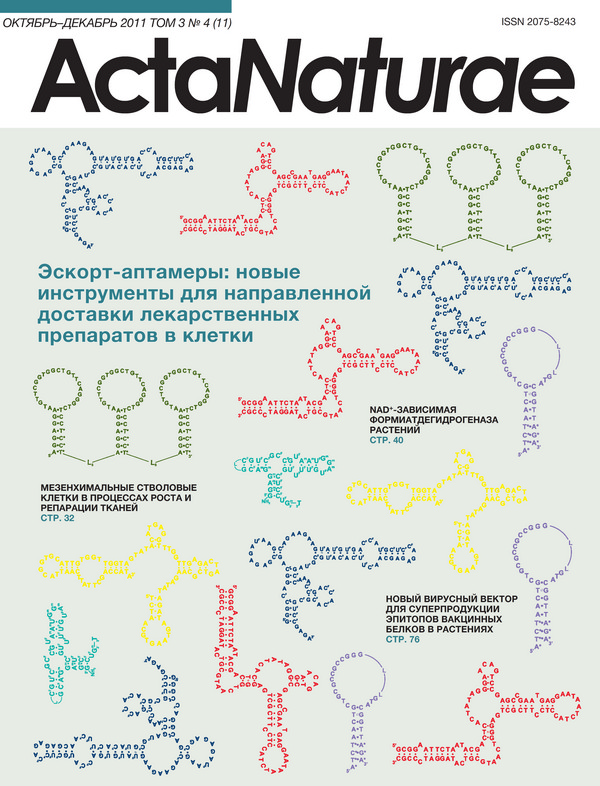Effect of Sodium Chloride on Aggregation of Merocyanine 540 and Photosensitized Inactivation of Staphylococcus aureus and Pseudomonas aeruginosa
- Authors: Shmigol TA1, Bekhalo VA2, Sysolyatina Е2, Nagurskaya EV2, Ermolaeva SA2, Potapenko AY.2
-
Affiliations:
- Pirogov Russian National Research Medical University
- Gamaleya Research Institute of Epidemiology and Microbiology, Ministry of Health and Social Development of the Russian Federation
- Issue: Vol 3, No 4 (2011)
- Pages: 107-113
- Section: Articles
- URL: https://actanaturae.ru/2075-8251/article/view/10662
- DOI: https://doi.org/10.32607/20758251-2011-3-4-107-113
- ID: 10662
Cite item
Abstract
Full Text
Effect of Sodium Chloride on Aggregation of Merocyanine 540 and Photosensitized Inactivation of Staphylococcus aureus and Pseudomonas aeruginosaAbout the authors
T A Shmigol
Pirogov Russian National Research Medical University
V A Bekhalo
Gamaleya Research Institute of Epidemiology and Microbiology, Ministry of Health and Social Development of the Russian Federation
Email: bekhalo@gamaleya.org
Е Sysolyatina
Gamaleya Research Institute of Epidemiology and Microbiology, Ministry of Health and Social Development of the Russian Federation
E V Nagurskaya
Gamaleya Research Institute of Epidemiology and Microbiology, Ministry of Health and Social Development of the Russian Federation
S A Ermolaeva
Gamaleya Research Institute of Epidemiology and Microbiology, Ministry of Health and Social Development of the Russian Federation
A Ya Potapenko
Gamaleya Research Institute of Epidemiology and Microbiology, Ministry of Health and Social Development of the Russian Federation
References
- Geinitz A.V., Sorokaty A.E., Yagudajev D.M., Trukhmanov R.S. // Laser medicine. 2007. V.11. P. 42-46
- O'Brien J.M., Gaffney D.K., Wang T.P., Sieber F. // Blood. 1992. V. 80. P. 277-285.
- Lin H.Y., Chen C.T., Huang C.T. // Appl. Environ. Microbiol. 2004. V. 70. P. 6453-6458.
- Sbarra M.S., Di Poto A., Arciola C.R., Saino E., Sharma M., Bragheri F., Cristiani I., Speziale P., Visai L. // Int. J. Artif. Organs. 2008. V. 31. P. 848-857.
- Pervaiz S. // FASEB J. 2001. V. 15. P. 612-617.
- Foote C.S. // Photochem. Photobiol. 1991. V. 54. P. 659.
- Kozhinova E.A., Kozyr L.A., Tikhomirov A.M., Kyagova A.A., Potapenko A.Y. // Bulletin of RSMU 2005. V.7. P. 47-52
- Kozhinova E.A., Tikhomirov A.M., Kozyr L.A., Kyagova A.A., Potapenko A.Y. // Russian Journal of Physical Chemistry A. 2007. V.81. P. 1335-1340
- Pasternack R.F., Collings P.J. // Science. 1995. V. 269. P. 935-939.
- Tikhomirov A.M., Shmigol T.A., Kozhinova E.A., Kyago va A.A., Potapenko A.Y., Bezdetnaya L.N. // Biophysics. 2009. V.54. P. 584-589
- Cunderlíková B., Sikurová L., Moan J. // Bioelectrochemistry. 2003. V. 59. P. 1-10.
- Adenier A., Aaron J. // Spectrochim. Acta. A. Mol. Biomol. Spectrosc. 2002. V. 58. P. 543-551.
- Davila J., Harriman A., Gulliya K.S. // Photochem. Photobiol. 1991. V. 53. P. 1-11.
- Kalyanaraman B., Feix J.B., Sieber F., Thomas J.P., Girotti A.W. // Proc. Natl. Acad. Sci. USA. 1987. V. 84. P. 2999-3003.
- Feix J.B., Kalyanaraman B. // Arch. Biochem. Biophys. 1991. V. 291. P. 43-51.
- Grimmecke H.D., Knirel Y.A., Kiesel B., Voges M., Rietschel E.T. // Carbohydrate Res. 1994. V. 259. P. 45-58.
- Zähringer U., Lindner B., Rietschel E.T. // Adv. Carbohydrate Chem. Biochem. 1994. V. 50. P. 211-276.
- Raetz C.R., Ulevitch R.J., Wright S.D., Sibley C.H., Ding A., Nathan C.F. // FASEB J. 1991. V. 5. P. 2652-2660.
- Navarre W.W., Schneewind O. // Microbiol. Mol. Biol. Rev. 1999. V. 63. P. 174-229.
Supplementary files







